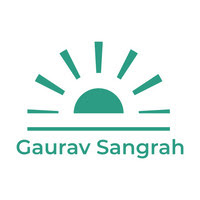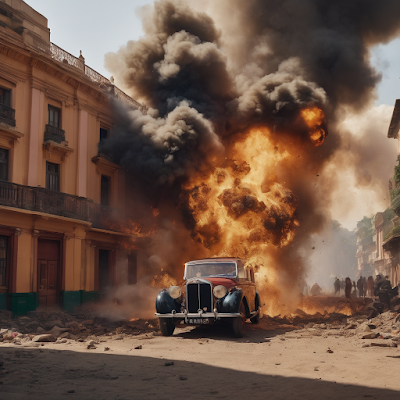Hello friends, how are you all. I hope everyone are healthy and doing progress in life. Today from Indian History ,we are going to talk about Pritilata Waddedar, a women freedom fighter who
- was a teacher and was also associated with the revolutionaries.
- who had stormed the European club.
- the British were so afraid of her that even her degree was confiscated by the British.
 |
| Pritilata Waddedar |
Introduction of Pritilata Waddedar?
Pritilata Wadedar was born on 5 May 1911 in Chittagong, Bengal (now Bangladesh). Her father's name was Jagabandhu Waddedar and her mother's name was Pratibhamayi. Earlier her surname was Dasgupta then changed to Waddedar. Pritilata was affectionately called Rani in the house.
Pritilata was educated at the Dr. Khastgir Government Girls' School and after that enrolled in Eden College, Dhaka. She took admission in Calcutta's Bethune College to pursue her further degree. Her meetings with Kalpana Dutta and Nalini Pal at Bethune College were also revolutionary.
After completing her college education, Pritilata came back to her village Chittagong and worked as a school teacher. She was greatly influenced by Rani Lakshmibai of Jhansi as she fought till her last breath and did not fall into the hands of the British.
How did Pritilata meet the revolutionaries?
Pritilata could not bear seeing the atrocities and treatment of the British towards the people. She had decided to fight against the British.
She heard stories of revolutionary Surya Sen's heroic deeds from people. She also felt a desire to work with his organization. She was trying hard to meet Surya Sen.
With great difficulty she met Surya Sen but he did not want to include Pritilata in his organization. While Pritilata tried hard to join his organization, she was allowed to join the organization.
Which works Pritilata Waddedar and Surya Sen did together?
When Surya Sen along with his companions attacked the Britishers. At that time
- They disrupted the telephone line, telegram office and railway line
- Pritilata helped in supplying ammunition, arms etc. to revolutionaries in Jalalabad war.
- She also supported Surya Sen's plan to kill an English police officer named Craig of Chittagong.
 |
| disrupted telephone lines |
It was impossible to meet Ramakrishna Vishwas but Pritilata went to meet him about 40 times. The British police never knew how many times she had visited the prisoner in jail. In this way Pritilata Wadedar and Surya Sen did many works together.
What did Pritilata Waddedar saw on the board of the European Club that she set fire to the club?
The European Club of the British was situated in Chittagong. A board with the name of the club put up outside the club "dogs and Indians not allowed". Seeing such insulting words written on the board, Pritilata felt very insulted to the Indians.
She used to talk to her friends that British insult Indians by coming to India. So she decided to teach the British a lesson. The idea was to blow up the club inside which Indians were not allowed, which in end would be a pride to India. So Pritilata set fire to the European Club to show what Indians can do to British.
How did Pritilata Waddedar got the insights about the European club?
From the day Pritilata read the derogatory words on the board of the European club, she started planning. She had sent Kalpana Dutta to spy for inside information on the club a week earlier. But Kalpana Datta was caught by the British for spying. Pritilata gained full knowledge of the club through cunning and decided to attack the club on 23 September.
How did Pritilata Waddedar exploded the European club?
Pritilata entered the club and saw that there were about 40 people in the club. She detonated the bomb near the window of the club. The bomb exploded in the club causing chaos and a fire. Some were injured in the exchange of bullets between Pritilata and the British.
An equal war was going on between the two. Thirteen Englishmen were injured and one woman was killed in the attack. Pritilata got shot in the firing and she ran out of ammunition. She was so injured that it was difficult for her to leave the club.
She made up her mind that even if she died, she would not fall into the hands of the British. So he swallowed a potassium cyanide pill she kept with her. She died instantly after swallowing the pill. Her body was found at the scene of the attack the next morning.
Conclusion:
In this article we have seen how bravely Pritilata fought against the British invaders. She chose to die like Rani Lakshmibai. She died on 23 September 1932 after taking a potassium cyanide pill.
She was just 21 years old when she died. The British were so afraid of Pritilata that they even kept her degree on hold. Her family was received her Bachelor of Arts degree in 2012 after 80 years by Calcutta University.
So readers, how did you like the story of Pritilata Waddedar? What are the things which should be added more in this article? If anything is left to mention about Pritilata Waddedar in this article feel free to comment in the comment box.
Thank you very much for reading this article till the end.
If you liked the article then do share it with your family and friends.
We will meet again very soon in another article with such another women freedom fighter from Indian History, till then take care.





















